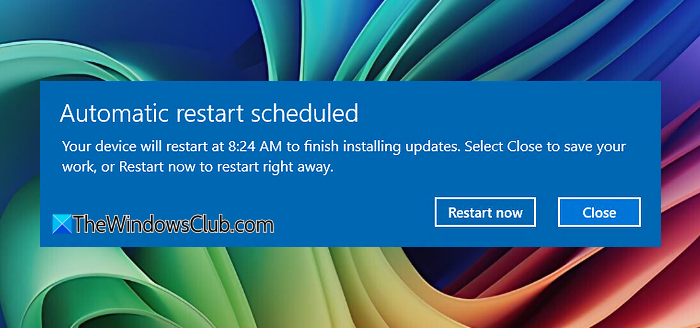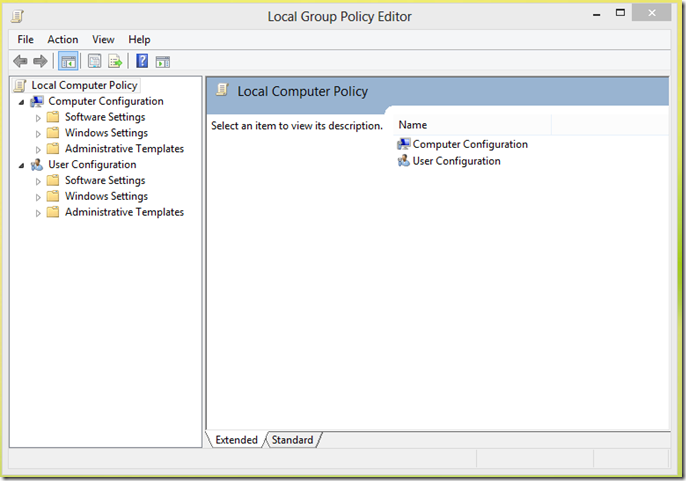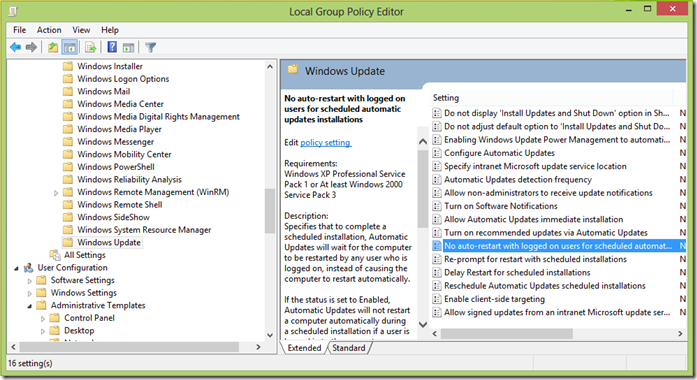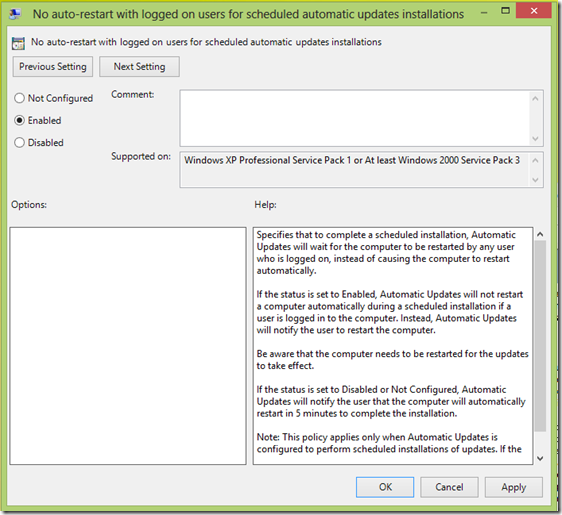This post will show you how to disable Automatic Restart after Windows Update in Windows 11/10. One of the annoying things about Windows 11/10 is the Windows Update will restart message. I have seen some users reporting that it restarts when you are in the middle of doing something, or it may say that I will automatically restart after 1 day. Well, there are ways to disable Windows auto-restart after Windows Updates – one by using the Group Policy Editor and the other via the Windows Registry. Windows 11/10 also offers you an additional option.

Stop automatic restarts after Windows Update

Disable automatic reboot after Windows Update using Group Policy
To disable Automatic Restart after Windows Update, using Group Policy, take these steps:
- Press Win + R and type in gpedit.msc

- Go to Computer Configuration > Administrative Template > Windows Component > Windows Update
- Right click on “No auto-restart with logged on users for scheduled automatic updates installations”
- Select “Enable” click on Apply and click on OK.
Related: Specify Engaged restart transition and notification schedule for Updates
Prevent Windows Update Automatic Restart using Registry Editor
To disable Automatic Restart after Windows Update using Registry Editor, open REGEDIT and navigate to the following key:
HKEY_LOCAL_MACHINE\SOFTWARE\Policies\Microsoft\Windows\WindowsUpdate\AU
If you don’t see it, create one. You may have to create \WindowsUpdate\AU.
Now under this key, create a new 32-bit DWORD called NoAutoRebootWithLoggedOnUsers and give it a hexadecimal value data of 1.
This will prevent automatic reboot while users are logged on.
This should stop Windows from automatically restarting your computer after Windows Updates.
Keep changing work hours in Windows to avoid stop auto restarts for Update
Windows doesn’t reboot during working hours and has a dedicated setting where you can define that. To avoid rebooting because of the strict rules, you can keep changing working hours using PowerShell commands.
for /f %%i in ('powershell "((get-date).Hour+18) %% 24"') do set startHour=%%i
for /f %%i in ('powershell "((get-date).Hour+12) %% 24"') do set endHour=%%i
reg add HKLM\SOFTWARE\Microsoft\WindowsUpdate\UX\Settings /v ActiveHoursStart /t REG_DWORD /d %startHour% /f
reg add HKLM\SOFTWARE\Microsoft\WindowsUpdate\UX\Settings /v ActiveHoursEnd /t REG_DWORD /d %endHour% /f
Save this file as a BAT file, and then use Windows Task Scheduler to make this script run every hour for 1 day and repeat daily. Additionally, you can add a minimized option to stop pop-ups of the command windows, make the task scheduler start the program/script “cmd.exe” and put as its arguments:
/c start /min C:\work\delayautoupdate.bat ^& exit
Use Quiet Hours or Focus Assist in Windows
In Windows 10 users will have to use Quiet Hours. Windows 11 users will have to use Focus Assist.
How to disable Automatic Restart after Windows Update
To stop automatic reboots after Windows Update, navigate to Settings > Windows Update > Advanced options. Under ‘Active hours’, disable ‘Restart this device as soon as possible…’.
Read: How to disable Automatic Restart on System Failure in Windows
How do I turn off auto-restart notifications for update installations?
To turn off auto-restart notifications for update installations, open the Group Policy Editor. Navigate to Computer Configuration > Administrative Templates > Windows Components > Windows Update. Locate and double-click on “Turn off auto-restart notifications for update installations,” then set it to “Enabled” to deactivate those notifications.
TIP: Did you know? You can now force an Automatic restart after Windows Updates.


This should be the default. it is shameful that we need to jump through this level of configuration to prevent an invasaive, work-losing reboot.
Once the updates have been done, sometimes your machine is in a weird state (eg one DLL has been replaced but a companion one has not, and will be during the restart) and you really should reboot sooner rather than later. If you change your update settings to “download and notify me” not only can you control when you install them (picking a time when a reboot would be ok) but after doing them it will not reboot until you let it. No need to go into group policy or registry. Do try to reboot as soon after the updates as you can, but control it yourself so you can save everything first.
Exactly. A simple notification stating, “Windows has been updated. Save opened files and restart as soon as possible” or something similar would suffice.
This was designed by idiots. What in the world they were thinking.
using regedit, I found the NoAutoRebootWithLoggedOnUsers – and its hexadecimal is already set to 1, and yet my computer force restarts after every update. I do not have gpedit.msc so I cannot try that method.
Yeah this is such a ridiculous setup. What if someone is trading in the stock market when it happens for example: they could lose a ton of momey. Worse still, in an emergency situation someone could die.
Yeah the message I used to see which said a restart is required and an automatic restart will take place in 1 day if you choose not to restart now was fine I thought.
Doing as mentioned above does not work. I still got rebooted after a Windows Update
I have followed both approaches; policy editor and regedit (they both do the same thing, anyway) and my comp still reboots every few days, fails to update, and rolls back the update. I am literally about to drop Windows and go Linux over this.